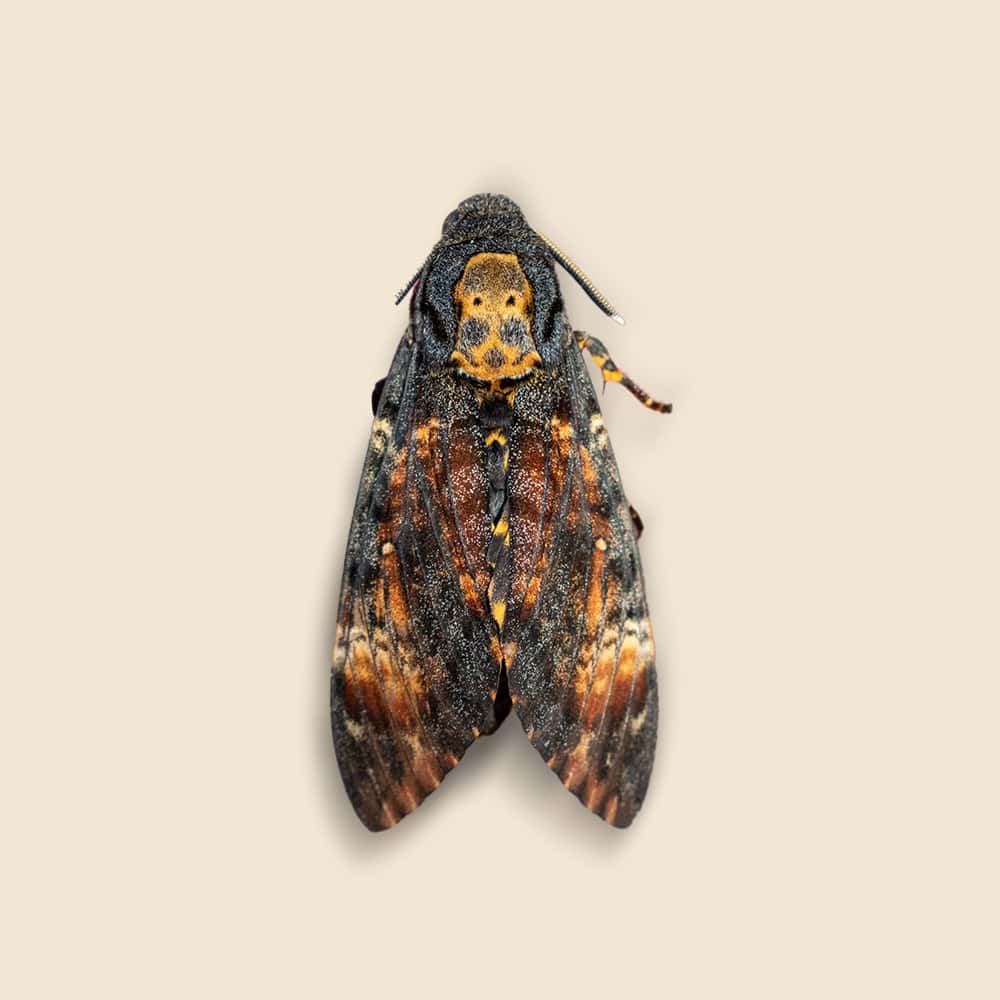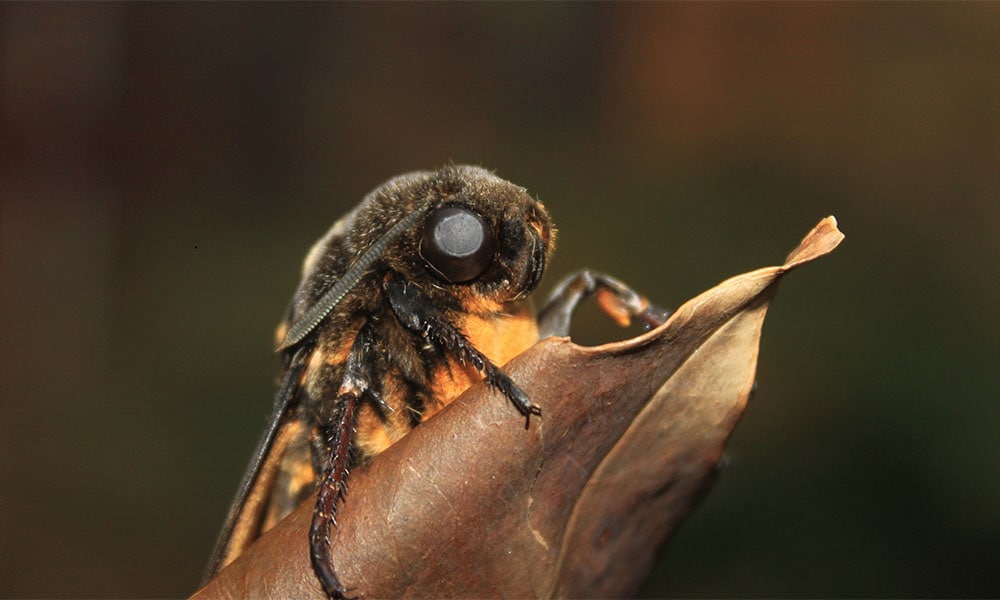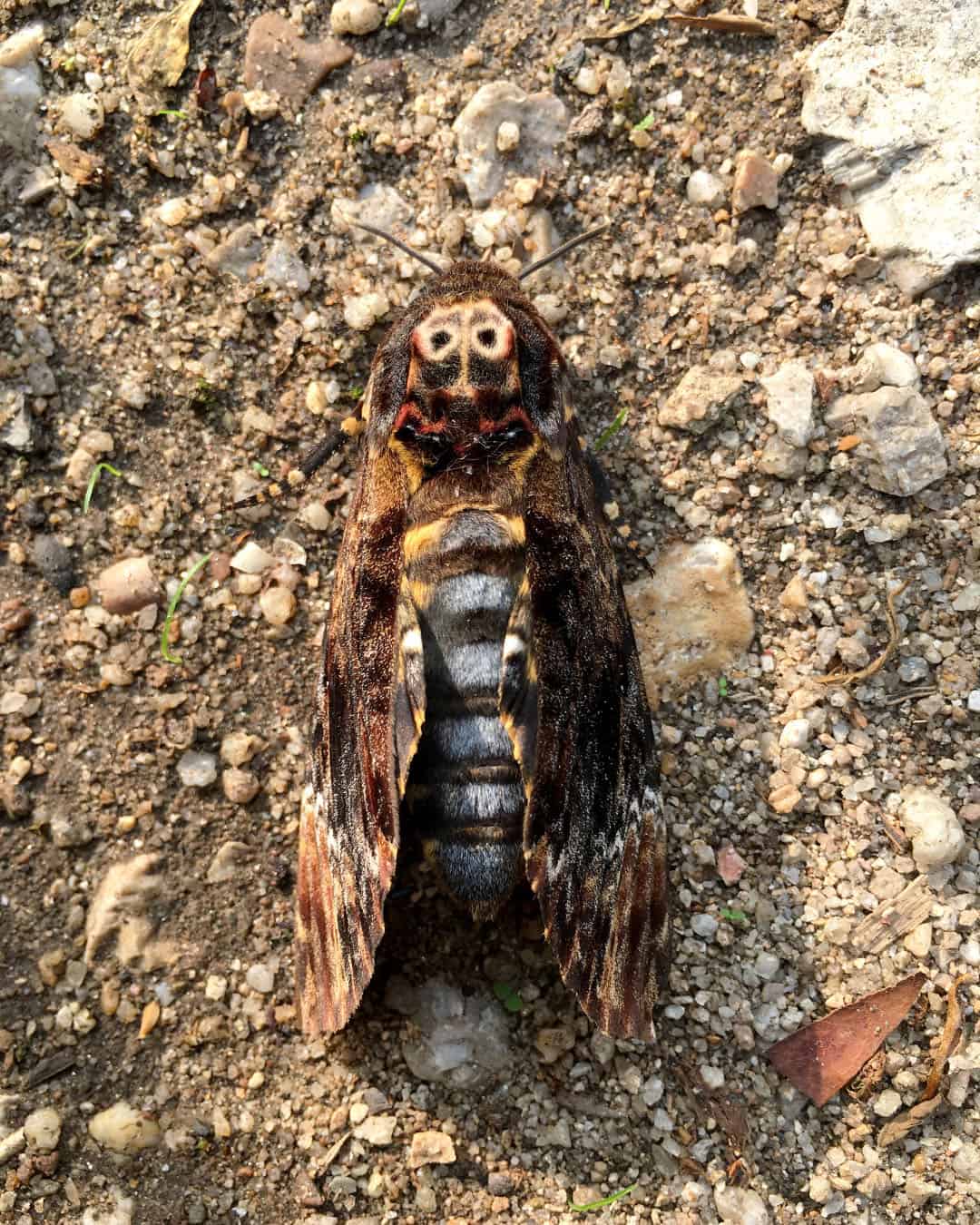Death's-Head Hawkmoth Facts & Information
The Death's-Head Hawkmoth, named for the skull-like pattern on its thorax, is a striking insect known for its unique appearance and large size. While generally not harmful to humans, these moths can become a nuisance in gardens and homes.

Acherontia
What You Need To Know About Death's-Head Hawkmoths
What do Death’s-Head Hawkmoths look like?
Death’s-Head Hawkmoths are large, striking insects with a wingspan ranging from 4 to 5 inches. Their forewings are brown with a distinctive pattern of yellow and orange. The most notable feature is a skull-like pattern on the back of their thorax, which gives them their name. The hindwings are bright orange with black borders.
What do Death’s-Head Hawkmoths eat?
As caterpillars, Death’s-Head Hawkmoths feed on a variety of host plants, including those in the nightshade family like tomatoes and potatoes. Adult moths primarily feed on nectar from flowers, using their long proboscis to access the nectar.
What sort of habitat do Death’s-Head Hawkmoths live in?
Death’s-Head Hawkmoths are found in a range of habitats including gardens, forests, and areas with abundant flowering plants. They are native to parts of Europe, Africa, and Asia but can occasionally be found in other regions due to their migratory nature.
How do Death’s-Head Hawkmoths commonly behave?
Death’s-Head Hawkmoths are nocturnal and are most active during the night. They are known for their impressive and intimidating appearance. The caterpillars are also notable for their large size and striking coloration. Adults are capable of producing a high-pitched squeak when threatened, which is believed to deter predators.
Did you know this about Death’s-Head Hawkmoths?
Death’s-Head Hawkmoths are known for their eerie appearance, which has inspired various cultural references and superstitions. The moth’s skull-like pattern has been associated with death and the supernatural. Despite their fearsome name and appearance, these moths are generally harmless to humans. Interestingly, the larvae of Death’s-Head Hawkmoths are also called hornworms and are sometimes found feeding on cultivated plants, making them a known pest in agriculture.
Understanding Death's-Head Hawkmoth Infestations
Understanding Death's-Head Hawkmoth infestations is crucial for effective management. These moths are nocturnal and are often attracted to light sources. Their larvae, known as caterpillars, feed on a variety of plants, including crops such as potatoes, tomatoes, and other nightshades. While the moths themselves do not cause damage, their caterpillars can be problematic for gardeners and farmers.

How Hearts Handles Death's-Head Hawkmoth Treatment
Hearts Pest Management employs an integrated pest management approach to handle Death's-Head Hawkmoth infestations. Our process begins with a thorough inspection to identify larval feeding sites, assess plant damage, and locate potential sources of moth attraction. We then develop a customized treatment plan that may include habitat modification, biological controls, and targeted insecticide applications, ensuring the health and vitality of your garden or crops.
Death's-Head Hawkmoth Inspection
Death's-Head Hawkmoth Treatment
Death's-Head Hawkmoth Prevention
Educational Resources

Think You Might Have a Death's-Head Hawkmoth Infestation?
At Hearts Pest Control, we understand the challenges associated with Death's-Head Hawkmoth infestations and are here to provide professional solutions tailored to your needs. Flourishing in warm and humid climates, they are prevalent in many regions, including San Diego County, Orange County, and Los Angeles County.